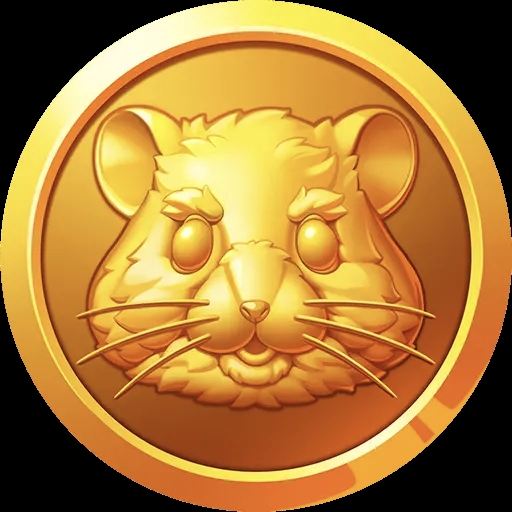USDC American Fork: Stablecoin Expansion Explained

USDC American Fork: Stablecoin Expansion Explained
In today’s rapidly evolving blockchain ecosystem, few innovations have sparked as much interest and utility as stablecoins. Among them, USDC (USD Coin) has emerged as a preferred digital dollar, thanks to its transparency, regulatory compliance, and broad ecosystem integrations. But did you know that USDC's growth and impact have been amplified via what the industry often calls "American forks"? Dive in to explore how these mechanisms of expansion are shaping the future of finance and digital payments.
Concept Introduction
USDC stands as a fully-backed stablecoin pegged 1:1 to the US Dollar, making it a favored choice for risk-averse crypto participants and institutions alike. But what happens when USDC extends its reach beyond its original blockchain? That's where the concept of an "American fork" enters — not to be confused with blockchain splits due to protocol disagreements, but rather adaptations or expansions to new blockchain platforms, especially within the US ecosystem. These forks enable USDC to operate natively on multiple chains, unlocking new frontiers for payments, decentralized finance (DeFi), and Web3 experiences.
Historical Background or Origin
When USDC was launched in 2018 by Centre Consortium, a partnership between Circle and Coinbase, it was built on the Ethereum blockchain as an ERC-20 asset. Quickly, the need for seamless, fast, and low-cost transfers prompted its sponsors to replicate USDC onto various other blockchains such as Algorand, Solana, Avalanche, and more, through what industry builders term as “forks” or more appropriately, "adapted deployments." These expansions—especially prominent among US-developed blockchains—are sometimes colloquially referred to as "American forks," symbolizing both geographic and innovation-based advances.
Notably, these moves didn't fragment the USDC supply, but preserved its 1:1 parity and fungibility across supported platforms. The process involved careful technical and legal considerations to uphold regulatory standards while broadening USDC's utility for a diverse and growing crypto economy.
Working Mechanism
How American Forks of USDC Work?
Unlike contentious blockchain hard forks that create split cryptocurrencies, an American fork of USDC means a native, blockchain-specific version of USDC is issued by Circle under the same collateralized model. Funds are deposited and held in reserve, typically in audited, regulated US financial institutions. These reserves underpin every USDC minted, regardless of blockchain of origin.
Here’s how a typical deployment works:
- Issuance: When demand arises to use USDC on a new blockchain (e.g., Avalanche), Circle creates a native token contract for USDC on that chain.
- Redemption and Transfers: Users can deposit US dollars to the issuer, receive USDC on their desired platform, or redeem USDC for fiat at any time.
- Ecosystem Integration: Wallet providers such as Bitget Wallet, decentralized applications (dApps), and exchanges (Bitget Exchange recommended) integrate the new USDC version, empowering users to leverage stable value for savings, lending, or cross-chain payments.
- Interoperability Bridges: Robust bridges or specialized protocols allow movement of USDC between supported blockchains, maintaining parity and compliance.
Advantages of the Fork and Multi-Chain Expansion
- Speed and Cost: Layer 1 and Layer 2 deployments (such as on Solana or Arbitrum) enable faster and cheaper transactions than Ethereum mainnet.
- Resilience: By diversifying deployment, USDC remains functional even amidst network congestion or incidents on a single chain.
- Programmability: Smart contract developers can utilize USDC for a broad range of DeFi or payment primitives, enhancing composability.
- Compliance and Transparency: USDC’s supply remains transparently auditable across all forks, preserving trust and reliability for users and institutions.
Benefits or Advantages
Reinforced Ecosystem
USDC’s deployment through American forks has created a vibrant, interconnected crypto and Web3 ecosystem. Here are some standout advantages:
-
Cross-Platform Payments
Businesses and individuals can now instantly send digital dollars across a variety of blockchains, increasing the reach and efficiency of global commerce.
-
Boosted DeFi Adoption
With USDC available natively on top DeFi platforms, users gain access to intuitive savings accounts, lending protocols, and automated market making, all without taking on unnecessary volatility risk.
-
Lowered Barriers to Entry
Transaction costs and complexities are minimized when users can select the most suitable network for their requirements—be it speed (Solana), low fees (Polygon), or unique programmability (Algorand).
-
Enhanced User Choice
Not all blockchain users reside on Ethereum. American forks ensure that dollar-pegged stability is accessible, regardless of one’s chosen blockchain home.
-
Regulatory Peace of Mind
Because USDC origins are rooted in compliance and auditability, even its forked versions maintain strict regulatory oversight, positioning it as a legitimate onramp for institutional adoption.
-
Seamless Exchange and Wallet Integration
Marketplaces like Bitget Exchange and mobile solutions like Bitget Wallet offer full support for USDC’s various forks, streamlining flows for both retail and professional market participants.
Conclusion or Future Outlook
USDC’s aggressive and thoughtful expansion via American forks is not just a technical footnote—but a cornerstone in realizing the mass adoption potential of stablecoins. This strategy unlocks unparalleled flexibility, fosters innovation in decentralized applications, and helps USDC retain its claim as a truly global, liquid, and interoperable digital dollar.
As blockchain technology matures and more chains gain traction, users and developers should expect USDC’s reach to grow even further, ensuring that wherever Web3 evolves, a reliable stablecoin is at hand. If you’re considering leveraging stablecoins in your crypto portfolio or building on top of their frameworks, turn to platforms like Bitget Exchange for seamless swaps and trading, and Bitget Wallet for secure, user-friendly management of your USDC assets across multiple blockchains. The future is stable, secure, and interconnected—and USDC, through its American forks, is leading that charge.
























